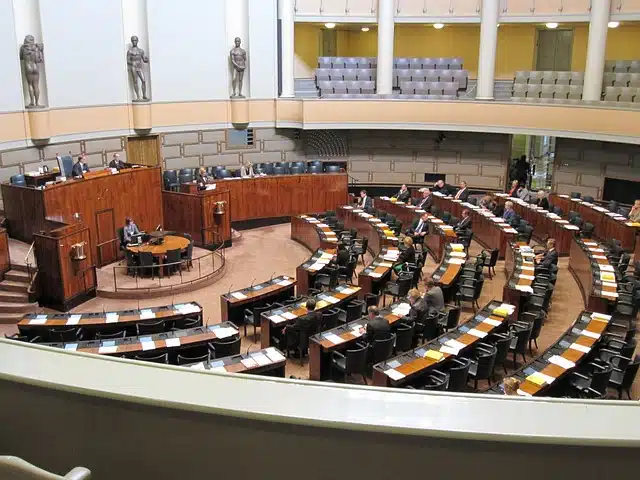
In the parliamentary regime, the Legislative Branch elects those who will exercise the Executive Branch.
The notion of government regime allows us to refer to how the different powers of the State are related. In all democratic regimes (based on popular participation when making decisions related to public issues), the parliamentary regime can be found.
In this regime , the Legislative Branch (represented by Parliament ) elects those who will exercise the Executive Branch (the government). In this type of system, the head of Government or Prime Minister is not the same as the head of State : the former presides over the Executive Branch , while the latter can be a monarch who acceded to his status hereditarily or a selected representative. by Parliament .
The population elects the members of Parliament through their vote and then the parliamentarians vote for the head of Government . The case of the presidential regime is different, in which people vote directly for the leader of the Executive Branch (the president).
Advantages of the parliamentary system
Those who defend the parliamentary regime highlight that, when various political parties enter Parliament , the decisions have a high social consensus. The head of Government must even respond to Parliament , which implies greater participation in the active politics that directs the destinies of a country.
Currently, in the parliamentary regime, a Prime Minister , who governs together with his cabinet, and a head of State , who acts as a mediator and has very specific powers, usually coexist. The Executive Branch and the Legislative Branch , meanwhile, interact according to what is established by the Constitution : generally Parliament can dismiss the Prime Minister and the Prime Minister can dissolve Parliament on extraordinary occasions.

Many countries in the world are governed by a parliamentary system.
Some examples in Europe
To better understand this concept, we will see some real examples of countries that adopted the parliamentary system. First of all, we can talk about Eastern Europe , where the largest concentration of this type of government occurs, more specifically in the following countries: Bosnia , Albania , Estonia , Croatia , Latvia , Hungary , Serbia , Romania , Slovenia and Slovakia .
In western Europe we also find countries with a parliamentary system; Such is the case of Italy , Greece , Austria , Germany , Malta , Portugal and Moldova , and many of them are also unitary states . In a unitary state, there is an organization that has a centralist government that delegates certain minor powers to administrative branches.
Parliamentary regimes in other parts of the world
Moving on to Southeast Asia , there are Bangladesh and East Timor , two countries that have a parliamentary regime. We cannot leave India out of this list, which has the second place in number of inhabitants worldwide, after China . Pakistan , Lebanon , Iraq and Israel are other countries with parliamentary governments, in this case, in the Middle East . Lebanon has a particular situation, since it also supports a system called Confessionalism , which allows the distribution of power among the various religious groups in the country.
Already on the African continent , we have three countries with a parliamentary regime: Ethiopia , Mauritius and Cape Verde , although the latter two are located on island territories . Mauritius adopted this type of government in 1968 , when it became independent from the United Kingdom , while Cape Verde did so more recently, in 1980 .
It is important to note that the parliamentary regime is present in other parts of the world, although not with as much density as in those mentioned above. For example, in the South Pacific there is Samoa , a nation located 500 kilometers from Fiji . There are also Dominica and Trinidad and Tobago , two countries that have had this regime for some decades; The first adopted it in 1979 , with its Reform, and the second, after becoming independent from the United Kingdom in 1976 .
